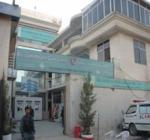
Yesterday evening while I was returning from work a friend called. He has recently taken over as the Head of Marketing Communications at an upcoming hospital. I had met him a few weeks ago to congratulate him on his new assignment and he seemed quite kicked about his new role. He had grand plans of changing the way the hospital communicated with its patients and other stakeholders, he wanted to run customer facing programs, drive relationships with patients through effective engagement and deliver uniformly great experiences to those who touched the hospital.
Yesterday over the phone Ajay felt he had made a big mistake by joining the hospital. I was quite flummoxed by this turn-around. Further inquiries revealed a familiar story. The hospital has a brand new CEO, someone who has worked for many years in hospital operations but have no knowledge or appreciation of communication. However, like most folks he too believes that marketing communications is hardly something to be left to experts. In fact the CEO believes that he knows exactly how a piece of advertising or a brochure should look like. Download the text from the web, adapt it by rewriting some of it, slap a few images downloaded from the net and include the mandatory images of some if the hospital doctors, run it past a few senior hospital bigwigs and, voila the ad or the brochure is ready. As far as hospital signage are concerned, the CEO feels that they really are meant to provide legible directions to the patients and fussing over them, their aesthetics and design is a gross waste of time, energy and money. Well I might be exaggerating a little here but this is really the long and short of what Ajay felt his CEO was doing and no wonder he had started feeling frustrated in the set up.
Marketing folks in hospitals always grapple with the problem of every one who is anyone coming up and advising them on how to create a piece of communication. Some doctors love to see their pictures in the ads and some other feel great if gory images of them operating heroically could be included in the communication. The CEO’s love to mutilate the advertising copy, insist on correcting perfectly well written text, increasing or decreasing the font and of course having the logo bigger, bolder and always 2mm to the right! Many a times the marketing communication executive has to sweat many hours trying to accommodate the conflicting wishes of the CEO, the star surgeon and his favourite flunky. All in a day’s work for the intrepid marketing guy, who can be forgiven for wondering if he is the only one who knows nothing about marketing communications.
Those who have worked in hospitals long enough know how to maintain a fine balance. They will wait till the last-minute, before asking a doctor to go through the text and approve the ad, they will sneak it past a doctor who they know is not too interested in the brochure’s finer details, they will get the mailer made and when a livid doctor would approach them on their failure to show it to him, they will deftly show an e-mail sent a few days ago knowing fully well that the doctor rarely checked the mail. Tricks of the trade, which one learns on the job.
Well, while all this may sound hilarious, the fact is that a hospital marketer’s life is not easy. If the hospital is doing well, his budgets are the first to be cut (why do we need to spend money on advertising, we have hardly a bed to spare!) and God forbid, if the hospital is not doing too well, the marketer knows that the hospital can hardly spare cash to blow its own trumpet. The doctors and particularly who head various departments are always after his life to see their ads in the newspapers, whether the marketer has the budget for such advertising is of course none of their concern. The CEO is always looking to pinch a few more pennies from a meager budget and he insists on stretching the money to impossible levels.
Such is than the life of a healthcare marketer.
Usually, in all this the silver lining is a boss, who understands the inner dynamics of the hospital, who knows how to work with medical folks without unnecessary confrontations, who lets the marketing guy go about his job without much hindrance and steps in to resolve conflict as it arises. He is the one who understands the aspirations of a good marketer as well as the concerns of the medical folks in the hospital and strives to achieve a balance.
At the end of the day, and in like most other things in life, a fine balance is the key.












